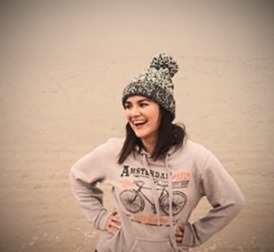Biomimicry - trusting nature
- Ale Varela

- 7 sept 2019
- 2 Min. de lectura
Actualizado: 3 dic 2019
Welcome to the science of Biomimicry, where nature is the heart and soul of the design process by providing inspiration and guidance for a more sustainable world.
If you haven't heard of this term then you are in for a treat!
Biomimicry is a concept perfectly explained on an amazing book published in 2009 by biologist Janine Benyus. The title of the book is"Biomimicry: Innovation inspired by nature".

This term comes from the words LIFE (bio) and IMITATION (mimicry). That pretty much sums it up, right?
It is about turning our attention to what's happening in the natural system. What are animals doing to survive? How are they adapting to their environment? What is their defense against predators? What chemicals do they produce in order to protect themselves? It's about understanding millions of years of evolution and knowledge found in nature to solve human problems.
Does it sound interesting? I think so! And the best part is, all that wisdom is right there at our finger tips.
Michael Pawlyn, an architect specialized in the field of biomimetic architecture and innovation, said it best:
“You could look at nature as being like a catalog of products, and all of those have benefited from a 3.8 billion year research and development period. And given that level of investment, it makes sense to use it.”
According to Michael Pawlyn, if we want to become a sustainable world we need to achieve these goals:
Radical increase our resource efficiency.
Switch from linear to closed loops.
Switch from fossil fuel economies to solar economies.
Now I'd like to give you a few examples of some amazing projects founded on the principles of Biomimicry:
The Shinkansen Train

The Shinkansen Bullet Train from Japan is a very good example of Biomimicry. Designers got their inspiration from the splashless water entry of kingfishers and silent flight of owls to decrease the sound generated by the trains during operations. The kingfisher’s beak is streamlined, steadily increasing in diameter from its tip to its head allowing the water to flow past the beak rather than being pushed in front of it.

Sensors for earthquakes
EvoLogic developed the Sweep Spread Carrier (S2C) technology to manage the challenging conditions presented by ocean waters. The S2Cs are underwater sensors that can transmit frequencies similar to those emitted by dolphins. These sensors can be used to detect underwater earthquakes and therefore aid in tsunami warning systems.

The device is based on eight years of research on the physics of dolphin communication. Dolphins and whales communicate under water very well and over long distances as well. They chirp and sing across a broad frequency bandwidth. This continuous change of frequencies not only serves to transmit information, but also to compensate for sources of interference such as echoes and noise.
Pretty amazing!
Want to see great videos on Biomimicry:
Here's Janine 's TED Talk (you can choose your preferred subtitles):
Here's Michael Pawlyn's TED Talk (you can choose your preferred subtitles):
If you'd like to know more about this topic please visit the site: https://biomimicry.org
The Biomimicry Institute was founded in 2006 by Janine Benyus and Bryony Schwan to share nature’s design lessons with the people who design and make our world.










Comentarios